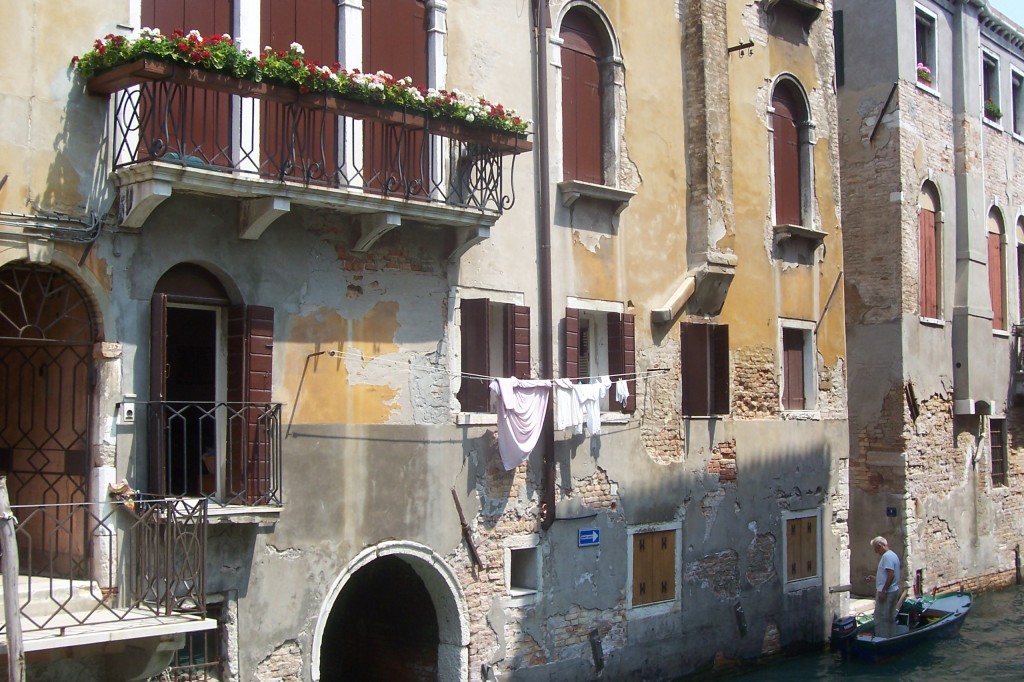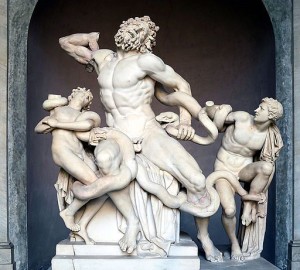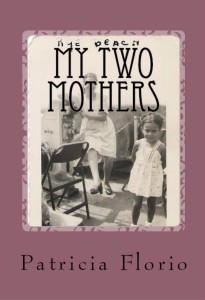 One of my favourite opening lines in a novel is from The Go-Between (1953) by L. P. Hartley: “The past is a foreign country: they do things differently there”. In a later introduction to the book from August 1962, Hartley wrote about what shaped his story of an older man reflecting on his past. It was largely one summer in 1900 that left such “a mark on my memory” at only four-and-a-half years of age: “From then on, for many years, I always hoped that the long succession of hot days would be repeated, but unless my memory betrays me it never was, in England at any rate, until 1959”. He concluded that, “I didn’t want to go back to it but I wanted it to come back to me, and I still do”.
One of my favourite opening lines in a novel is from The Go-Between (1953) by L. P. Hartley: “The past is a foreign country: they do things differently there”. In a later introduction to the book from August 1962, Hartley wrote about what shaped his story of an older man reflecting on his past. It was largely one summer in 1900 that left such “a mark on my memory” at only four-and-a-half years of age: “From then on, for many years, I always hoped that the long succession of hot days would be repeated, but unless my memory betrays me it never was, in England at any rate, until 1959”. He concluded that, “I didn’t want to go back to it but I wanted it to come back to me, and I still do”.
Patricia Florio would likely understand that sentiment. She has written a memoir, My Two Mothers: A Memoir with Recipes. My Two Mothers tells the story of a girl raised by two women in Brooklyn in the 1940s and ‘50s: Patricia’s mother, Millie (actually Amelia), and Millie’s sister, Jennie. Patricia writes that “Mama got her ideal situation – and so did Aunt Jennie – a daughter for her childless sister, a daughter to dote on so Mama could fulfill her need to work “outside the house” content that her youngest daughter was safe and well attended to”.
The book originally came from Patricia’s MA thesis at Wilkes University. Theses and dissertations are often destined to languish in library basements. In this case, publisher Gina Meyers of Serendipity Media Group thought that Patricia’s work could make a book. In line with Gina’s interests in cooking, she felt that the book should also contain some of the recipes from Patricia’s growing up in an Italian-American house in Brooklyn.
The result is the addition of actual recipes to a memoir already filled with food: the J&M Grocery store that Jennie and Millie opened, with the tomato cans stacked in a pyramid; the “smell of fried meatballs [that] wafted out of the windows on Sunday mornings” in the largely Italian and Irish neighbourhood on and around Union Street; and family gatherings – be they for holidays, birthdays, or a death – that “began and ended around a kitchen table”. It is a wise move, for food holds such memories for people, particularly (in my experience) children of Italian immigrants.
In addition to the rich characterizations of the Prano sisters, other family members, and neighbours like singer/songwriter Teddy Randazzo and his group The Three Chuckles, Patricia says that there really is one other character in the book. That is Brooklyn, New York. Brooklyn seems to be one of those places very much representative of a collective past, even for those who have never lived there. Perhaps it is the nature of a place that was inhabited so largely by people who all left different pasts and foreign lands to start a common future (in my brother’s genealogy research, even some of my own family). Children of these people, and their children’s children, may have left long ago but many seem to still carry Brooklyn with them. In Walt Whitman’s poem “Crossing Brooklyn Ferry” Whitman speaks to imagined future commuters (fifty, a hundred or many hundred years from him) on the ferry between Manhattan and Brooklyn:
It avails not, time nor place—distance avails not,
I am with you, you men and women of a generation, or ever so many generations hence,
Just as you feel when you look on the river and sky, so I felt,
Just as any of you is one of a living crowd, I was one of a crowd,
Just as you are refresh’d by the gladness of the river and the
bright flow, I was refresh’d,
Just as you stand and lean on the rail, yet hurry with the swift
current, I stood yet was hurried,
Just as you look on the numberless masts of ships and the
thick-stemm’d pipes of steamboats, I look’d.
When I visited Brooklyn a few years ago, I looked across that water and, in particular, up at the very tall apartment buildings. My mind wandered not to the future, but to the past, and all those who had lived, loved, fought, and broken bread there. Those who had felt as Whitman had.
In this interview with Patricia, I asked her to reflect on researching, writing about, and grappling with family history; nostalgia; the changing face of Brooklyn; where her writing has taken her; and, of course, good old Italian cooking.
Adam: My Two Mothers was your Master’s thesis. What led you to choose your topic of growing up in Brooklyn within a large extended family?
Patricia: “Write about what you know”. This is a simple suggestion, one that most writing professors encourage their students to take seriously. So I did. Sometimes I thought of my family as Damon Runyon characters, like from Guys and Dolls, each one a distinct character from the other. Thinking that way put me in touch with my feelings, sights, smells, sounds and tastes for the old neighbourhood in Brooklyn and my family members. I sincerely thought Brooklyn could be a character in and of itself. It has so many definitions: home of the Brooklyn Dodgers; Nathan’s Famous in Coney Island; Coney Island beaches; the Cyclone, Thunderbolt, and the Parachute Jump; and the aromas of all of the above. How could I not write about such an eclectic past? Some of the best writers come from Brooklyn, and I certainly wanted to be remembered as one of the good ones.
Adam: Tell me a little about the house on Union Street. How long was the house in the family?
Patricia: The house on Union Street was a gathering place for “la famiglia”; a fun place, not only where I lived with my parents on the third floor, but where everyone came to see grandma, the holidays were spent, tomatoes were grown in the backyard for the Sunday sauce, and where grandma had her basil bushes and fig trees. It was also where we connected to our neighbours: Philip, my best friend, and his family; and the Sconzos on the other side of us who had a contingency of family and friends bigger than ours. The house always evoked festivities. And to tell the truth, it still does.
The actual construction of the house was red brick facade, grey concrete steps, and beige/pink stone balusters. It looked like a mini fortress. There were windows in the front and back of the house. The front windows overlooked Union Street, a busy traffic street, and the windows at the back of the house overlooked backyards of neighbours and the steeple of St. Agnes Catholic Church on Sackett Street.
There were only two apartments in the early 1900s, where the entire Prano family lived in and slept. When I was born, there were three apartments: Grandma living in the basement apartment, Aunt Jennie and Uncle Frank on the second floor, and then up a steep staircase was our apartment. At one time, the apartment my Aunt Jennie and Uncle Frank lived in before I was born were the bedrooms for Grandma Petrina and Grandpa Giovanni’s children (my aunts and uncles, of which there were nine altogether that lived. Grandma miscarried a set of twins later in life). I lived with my sister and brother, who were older than me, and my father and mother, of course. Some of the hallway decor I still possess today: beautiful frames and pictures of early Americana, and one of the Rialto Bridge in Venice.
Adam: Your book wasn’t originally a food memoir. How did it become one?
Patricia: Gina Meyers had the idea to insert recipes into My Two Mothers, creating the new edition that you’ve read. I first sent her a version of what I called Cucina Amelia, a celebration of food and family. It was a hardcover cookbook that I made for family and friends with a local printer, using standard 8 by 11 typing paper and old pictures of family members from my parents’ photo album. Gina loved it and utilized some of my grandmothers’ and mother’s recipes. She selected the recipes that are in the new edition of My Two Mothers: A Memoir with Recipes. Eventually, Cucina Amelia became my next project for publication.
Adam: How were the family recipes passed down to you? How did you choose which recipes to include in the book?
Patricia: Since the only time I spent with my part-time working mother was as she prepared our meals around four o’clock in the afternoons, I learned my cooking skills from watching her. The house on Union Street and all the family members celebrated the holidays as one entity every year for as long as I can remember. My mother and her sisters prepared all of those meals, and some of the stories of those holiday events are the head stories in Cucina Amelia. Again, watching and assisting in preparing the dishes, I picked up tips, influences, and the art of cooking for my own family after I was married.
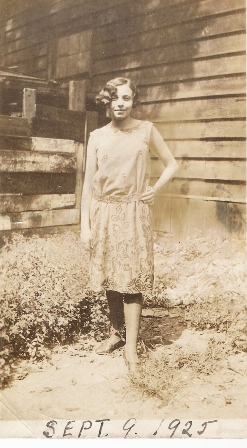
Adam: What was good about choosing to write a family history? What was not so good?
Patricia: When a person chooses to write about family history, it’s kind of scary. I remember that I pitched My Two Mothers as my thesis in this way: what if a woman who has a sister who cannot have children decided to give her unborn daughter to her baron sister, on loan that is, would you read that story? My classmates and professor wanted more. And I embellished, or got creative, about how to tell the story. The original thesis has more pages in it than the memoir that was published. There were some things that I didn’t feel I had the right to tell, even though most of the people had since passed. It’s the Italian guilt left attached to the psyche that did me in!
Choosing to tell this family story, even abbreviated, as it was, for me kept my mother and Aunt Jennie alive a bit longer. It’s a bittersweet story, one I enjoyed telling especially during the time the women went into the grocery business together, and when I had them to take care of in their old age. I feel as if I had such a rich childhood, even with its depressive days, that I wanted to share these two women, Millie and Jennie, with the world.
Adam: Italians (I know) are notoriously guarded with the family secrets. There’s the whole “don’t let the neighbours see” attitude. Was this an issue or barrier when you were writing the memoir; both in terms of other family members finding out and for your own creative process?
Patricia: Yes, I’d have to say I was guarded, especially about their younger brother, whom I called Uncle Sly Fox in the book. His daughter, one of my favourite cousins, and I had always been friends up until the time she aided her father in taking Aunt Jennie away from my home and never bringing her back. I haven’t been too forgiving about that. My mother yearned for her sister; they should never have been separated. It’s still painful, even as I write these words. I allowed my creative process to go so far. I believe I didn’t cross the line. Yet, when I look at my bound thesis, there is a painful aspect of my mother dying that I didn’t put into in the book you read. She (Millie) died in 2004 at 95 years old. Jennie died in 2006 at 99 years old. I agonized over how painful it was for me to write. I just made a decision at the last minute that the book was going to the original publisher to leave that out and summarize the ending. But I can’t say it stunted my creative process. I’m sure it didn’t.
Adam: I’m interested in the allure of nostalgia, and how we may remember a time through rose-coloured glasses. How did you manage this natural human tendency while writing?
Patricia: I am a nostalgic person, but I don’t live in the past. I just embrace it. I have a wonderful present life with my husband, children and grandchildren, and several good friends. I live in a beautiful section of the Jersey Shore with the Atlantic Ocean 50 steps from my front door. It has given me poetic license to dream and think and focus on my writing. But I loved Brooklyn and my family growing up there, both sides of my family, even though I’m more aligned to the Sicilian roots inside me. I love to listen to the aria “Nessun dorma”. Different arias give me the vision of what used to be, how Italians celebrated life. The culture born inside me I allow to flourish whenever I come in contact with people. I love people. I love company. And I have plenty of it during the summers living in a beach community. I embrace the old ways, yet I’m as modern a woman as my mother and Aunt Jennie were. Nostalgia fills me on certain days and I allow it to enter into me. I don’t chase its warmth away.
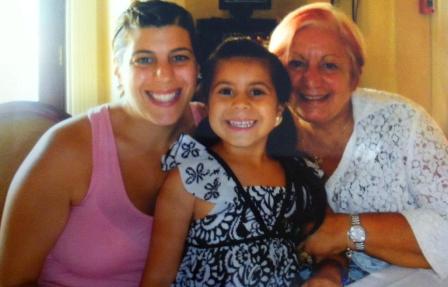
Adam: What was your family’s reaction to the memoir? What did your two mothers, Millie and Aunt Jennie think of it?
Patricia: There are several reviews on Amazon, a few from my family members. My brother said, “You killed me”, when we first spoke after he had read my story. My writing caused his emotions to flow. Others thanked me for the memories. My brother’s daughter Christine said, “My father won’t tell you this, but he felt like he abandoned when you needed him most as a child”. Those years that separated me from my sister and brother were like a whole other generation; they are 14 years and 10 years older. My sister married when I was six years old. My brother went into the Air Force when I was eight. In essence, I was an only child.
My mother and Aunt Jennie had both passed when I wrote My Two Mothers. I think my mother would have been extremely happy knowing how much her life impacted mine. We weren’t really friends until my mother was about 80 years old. I have to admit I was closer to Aunt Jennie. I had taken Aunt Jennie’s infirmities and loss of two husbands, Frank Richmond and Nick Coniglio, as my job to handle. That’s why it was so hard for me when she went with her younger brother: the fact that she allowed them to lure her, to go and live with them and abandoned my mother. It took a lot of praying on my part and years for me to get over it.
Adam: Tell me about your participation in the Fellowship program at the Norman Mailer Center. How did this come about?
Patricia: Norman Mailer was on the board of trustees of Wilkes University’s Creative Writing programs. He helped get the courses accredited with its founders Dr. Bonnie Culver and Dr. J. Michael Lennon. Dr. Lennon is Norman Mailer’s official biographer. Mr. Mailer had a stake in all of its students/writers. And we in turn had a stake and an opportunity to be mentored after graduating with our degrees by other faculty and professors from across the country. These scholarships and fellowships were set up by the Norman Mailer Society or the Norman Mailer Center, I forget which one, and anyone around the world could apply by sending 30 or 40 pages of a project that they are working on. I did this on two occasions. In 2012, I was a fellowship finalist and went to Provincetown to Mr. Mailer’s home for my memoir workshop. In 2014, I was granted a scholarship and went out west to Utah for my week’s workshop.
Adam: What are some of your other works?
Patricia: On my website, patriciaflorio.com, I have some of my other works that I’m proud of. One called Theresa is about my sister-in-law Terry. Phyllis Scott published a lot of my short stories. I’m especially proud of how I entered into the writing world via newspaper travel pieces and commentaries being published by local and major newspapers. I covered the Scene Page for the Two River Times, a Red Bank weekly newspaper, for a couple of years. I’ve written for stripedpot.com, a travel e-zine and my work can be found in numerous anthologies and literary journals.
Adam: Brooklyn has undergone tremendous change since your grew up there. To you, what is the most noticeable change?
Patricia: Ah, Brooklyn, to me it has never changed, although I know it has. The face of my grandmother’s house has been modernized. Obviously, that’s especially noticeable. But nowadays, the people in the neighbourhood where I grew up, now called Carroll Gardens, are rich or at least well-to-do! We were poor white Italian-Americans and Irish-Americans, struggling to better our lives. Now, I guess the neighbourhood is considered gentrified; people are tagged as nouveau riche.
Ebbets Field is no longer there, where the Brooklyn Dodgers were nicknamed the Brooklyn Bums. Brooklyn people loved the Dodgers when I was growing up. The “Boys of Summer” from 1955 when they beat the New York Yankees, will never be again. Brooklyn Heights is still upper class. I go there often to look out across the river and marvel at the skyline. My mother-in-law still lives in Brooklyn, downtown, as it was referred to in the good old days, so I still have plenty of opportunities to eat in restaurants that I had eaten in as a kid.
Adam: As you’ve gotten older, have your memories become less dependent on the physical house on Union Street, or do you still long to be in that place?
Patricia: My memories are not dependant on the physical house on Union Street. That’s why we have memories. I can conjure them up anytime I want. I don’t long to be in that place anymore. I can be anywhere where my husband is. We were just married 43 wonderful years. My life and his are joined at the hip. Well, that’s what a lot of people say about us. We were in the same career for almost 30 years as court reporters. I still have occasion to transcribe his notes from the District Court at Newark, NJ, when things get hairy and he’s on a long trial.
Adam: Do you have any recommendations for people wanting to document family history?
Patricia: I think documenting family history is a fun thing to do if you’re up for the job. I spent several months researching my family’s history from Palermo, Sicily to the United States, the ship they came on, etc. I even went on a trip to my father’s parents’ village in Avellino, Naples. I think I found the right spot where my Prato grandparents came from. I’ve learned a lot of interesting things going to Italy and reading other authors’ books about Italy: recipes, culture, their holiday traditions, and so forth. I’m none the worse for all the reading.
A few interesting facts: my parents Amelia Prano and Rocco Prato, almost the same last name, were both born on August 16, five years apart. My mother’s name Amelia is similar to my father’s mother’s name Amalia, whom my sister Molly is named for. Both of my parents had nine brothers and sisters.
Adam: What are you working on at the moment?
Patricia: At the present time, I’m working on what I’ve entitled Confessions of a Court Reporter. It’s a book that starts out about a young girl who tells a very potent lie to her father when she is 10 years old. It also weaves in some of the cases I’ve worked on as a court reporter and/or transcriptionist. I’m not giving away any more of the story. The first half of the book is now revised and is being edited, while I continue to work on the second half. This is definitely a labour of love that I’ve been toiling over for the past two years and have workshopped at the Mailer Colonies. It even contains some poetry.
My Two Mothers: A Memoir with Recipes can be purchased at the publisher’s website or at Amazon.com. Patricia’s other book, Cucina Amelia, is also available on Amazon (link to her author’s page). Patricia’s website is here.
Excerpts from The Go-Between are from the 2002 edition published by The New York Review of Books (New York, NY). Excerpt from “Crossing Brooklyn Ferry” is from Leaves of Grass, available through Project Gutenberg.
